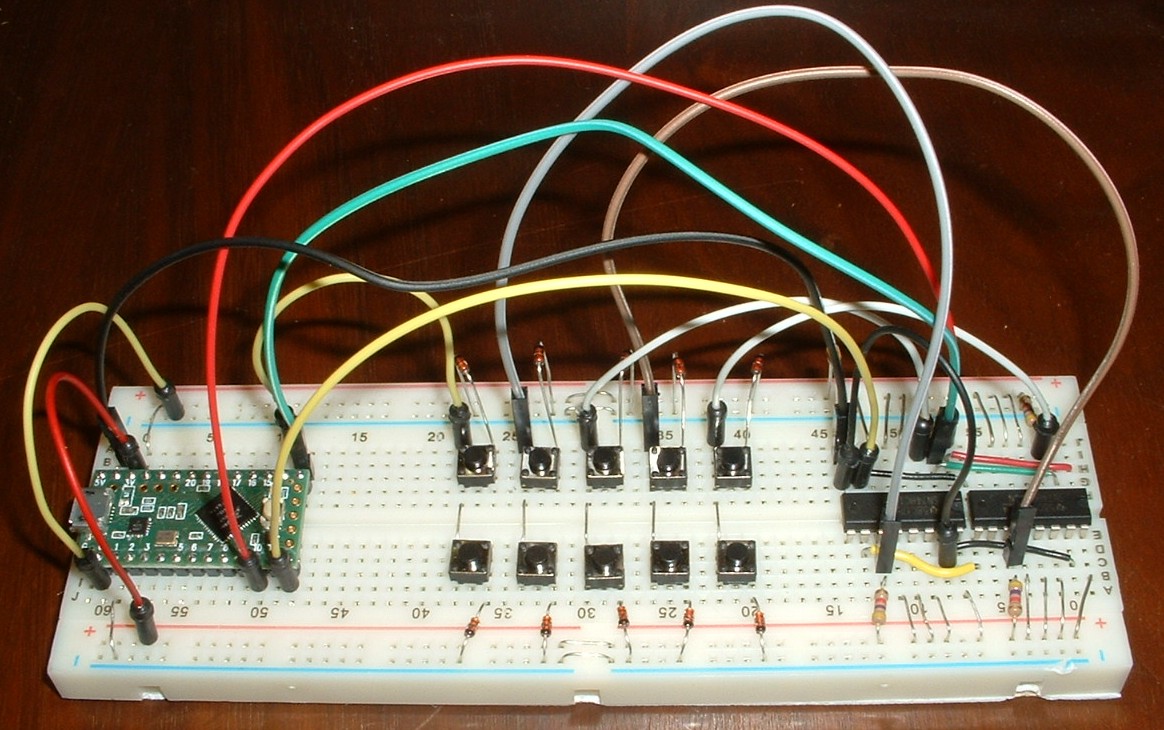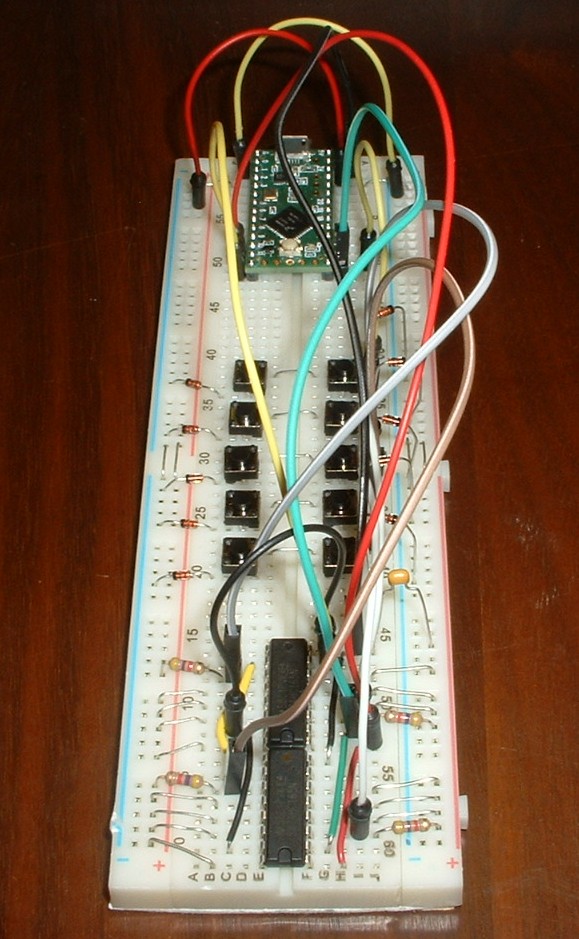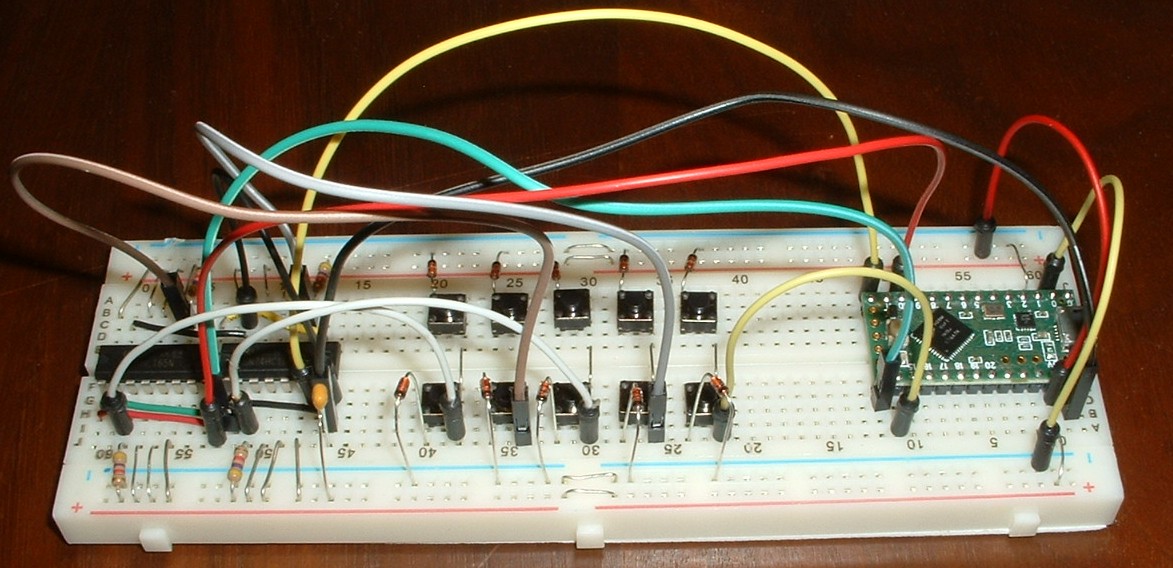tutorial_4b_split_keyboard_with_shift_registers.md 4.7KB
keybrd Tutorial 4b - split keyboard with shift registers
When you finish this tutorial you will be able to be able to modify a 2-matrix keybrd sketch to suite your own split keyboard design.
Overview of split keyboard with shift registers
The breadboard in the following picture models a split keyboard.
The primary matrix on the left has one column, which is read by a microcontroller pin. The secondary matrix on the right has 4 columns, which are read by the shift register input pins. The primary and secondary matrices share the same rows, which are strobed by micro-controller pins. Both matrices are active low.
Building a split keyboard with shift registers
The breadboard keyboard modifies the basic breadboard keyboard described in tutorial_1_breadboard_keyboard.md
Add components to the breadboard as shown in the picture.
The shift register is a SN74HC165N. Details are in the SN74HC165N datasheet.
Each shift register has a small notch on one end to identify pin 1. In the picture, 1 pins are on the right end. Shift registers are chained together by colored wires that lay flat on the breadboard.
Each shift register has 8 parallel input pins, 4 on each side. The breadboard doesn’t have enough room for 16 columns; only 4 columns are connected to the shift registers. Every 4th input pin is connected to a matrix column and a pull-up resistor. Unused input pins are connected to power. The red bus strips power the pull up resistors and unused input pins.
A decoupling capacitor between the power and ground wires dampens noise coming in through those wires.
Blue bus strips are used for strobing rows
I apologize for not having a schematic. This table should help you figure out the pictures:
74HC165 left (upper half of breadboard)
NAME PIN# I/O DESCRIPTION DESTINATION PIN# CHAIN (wires flat on breadboard)
SH/LD 1 I shift or load input Teensy LC CS0 10 red wire
CLK 2 I clock input Teensy LC SCK0 13 green wire
D4 3 I parallel input pull-up resistor red bus
D5 4 I parallel input power red bus
D6 5 I parallel input power red bus
D7 6 I parallel input power red bus
/QH 7 O ~serial output Teensy LC MISO0 12
GND 8 ground gnd black wire
74HC165 right (lower half of breadboard)
NAME PIN# I/O DESCRIPTION DESTINATION CHAIN (wires flat on breadboard)
VCC 16 power pin Teensy LC 3.3V red bus
CLK INH 15 I clock inhibit gnd black wire
D3 14 I parallel input power red bus
D2 13 I parallel input power red bus
D1 12 I parallel input power red bus
D0 11 I parallel input pull-up resistor red bus
SER 10 I serial input next QH yellow wire
QH 9 O serial output previous SER yellow wire
Sketch for split keyboard with shift registers
keybrd_4b_split_keyboard_with_shift_registers.ino is a simple sketch with two shift registers. The sketch will run on the above breadboard keyboard. Annotations in the sketch explain the code.
Exercises
- Guess what happens if an unused input pin is not powered? Try it.

keybrd tutorial by Wolfram Volpi is licensed under a Creative Commons Attribution 4.0 International License.
Permissions beyond the scope of this license may be available at https://github.com/wolfv6/keybrd/issues/new.



